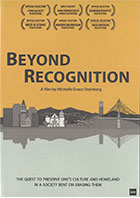
Beyond Recognition 2014
Distributed by Documentary Educational Resources, 101 Morse Street, Watertown, MA 02472; 617-926-0491
Produced by Michelle Grace Steinberg and Robyn Bykofsky
Directed by Michelle Grace Steinberg
DVD, color, 25 min., English and Chochenyo with English subtitles
High School - General Adult
Activism, Native Americans, Native Peoples, Social Movements, Urban Areas
Date Entered: 08/30/2016
Reviewed by Wendy Highby, University of Northern ColoradoBeyond Recognition documents the advocacy efforts of a small grassroots group, Indian People Organizing for Change (“IPOC”). Formed in 1999, IPOC fights for the cultural survival of the Chochenyo/Karkin Ohlone Nation, an urban Native American tribe. The Ohlone People are indigenous to the central California coast area, including what is now the San Francisco/Oakland Bay Area. In order to exploit their labor, the Ohlone were colonized by Spain and the Catholic Church; they were disconnected from their culture by conversion, baptism, and the seizure of their land. The film briefly recounts that disconnection and touches on activism at Alcatraz Island in the 1970s. But the documentary’s main focus is the current activism of IPOC founders Corrina Gould and Johnella LaRose.
IPOC seeks recognition of the Ohlone People’s sovereignty, protection of their sacred places, and the revival and survival of their culture. The Ohlone are not yet officially acknowledged by the U.S. federal government. Because they lack a sovereign relationship with the U.S., they don’t have the ability to effectively protect their lands and ancestors, nor do they have access to federal health and education programs. The Ohlone Nation’s application for federal recognition status is in process, but it is a lengthy, bureaucratic procedure, typically taking decades to resolve. In the meantime, Gould and LaRose are pursuing other remedies. The film documents their consultation with the California Indian Environmental Alliance, resulting in the creation of a non-profit indigenous land trust, “The Sogorea Te Land Trust.” Through the Trust, the activists seek protection of, and to prevent further damage to the approximately 425 Bay Area sacred mound sites. For the Ohlone People, these sites (which contain molluscan shells and human remains) are more than middens of archaeological interest. IPOC’s goal is to protect and/or recreate places to which the spirits of their ancestors may return, and to ensure that the tribe’s religious practices continue. The film shows IPOC’s protests of encroaching urban development at a shopping center in Emeryville and a park in the City of Vallejo. Public educational efforts through Corrina Gould’s classes at the Oakland Museum of History are included, as are clips of participation in community-building social and religious events.
The editing and narrative choices of the filmmakers help to underscore the activists’ determination to restore indigenous land rights. Those rights allow them to practice their religion outside in nature, and thus they are essential and central to the Ohlone People’s cultural survival. The resilience of the activists and the community in the face of the dominant culture encroachment is apparent. The film states it is “dedicated to the Ohlone and other indigenous peoples worldwide whose lands have been supplanted by cities, but whose cultures continue to flourish.” It will support curriculum in courses in the fields of museum studies, anthropology, Native American studies, history, political science, sociology, cultural and ethnic studies. Especially, students of urban studies and grassroots social movements should see this film.